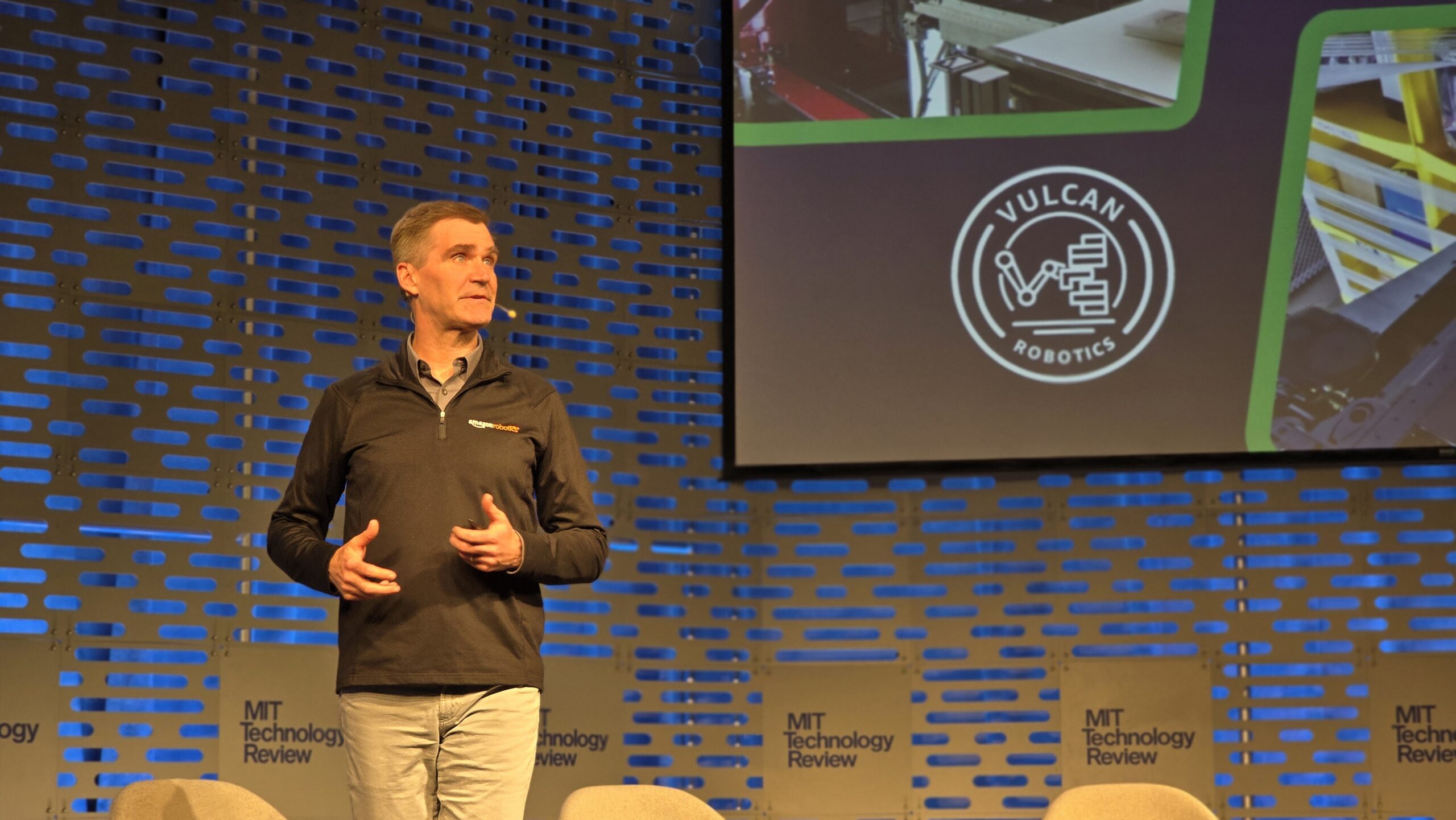Cambridge, MA – MIT EmTechAI: When Scott Dresser, Vice President of Amazon Robotics, took the stage at EmTechAI, the room buzzed with anticipation. After all, this is the man who’s helped shepherd Amazon’s robotics revolution since the company’s acquisition of Kiva Systems in 2012 – a move that marked a watershed moment for both Amazon and the broader world of logistics automation. Today, Amazon’s fulfillment centers hum with the synchronized motion of more than 750,000 robots, a testament to just how far the company has come.
But Dresser wasn’t there just to talk about the past. He was there to unveil the future.
Meet Vulcan: The Robot That Can Feel
The star of the show was Vulcan, Amazon’s newest robotic marvel. What sets Vulcan apart isn’t just its mechanical prowess or AI-driven vision-it’s the fact that, for the first time, an Amazon robot can actually “feel” what it touches. With advanced force, torque, and tactile sensors embedded in its end effector, Vulcan can sense when it comes into contact with an object, enabling it to pick and stow items in Amazon’s famously cluttered bins with unprecedented dexterity.
This sense of touch is more than a technical milestone. In the chaotic, densely packed world of Amazon’s fulfillment centers, traditional robots have struggled to handle the sheer variety and density of products. Vulcan’s tactile ability, combined with sophisticated AI models, allows it to navigate these challenges, picking and placing items where human workers once had to stretch, bend, and climb to reach.
Safety, Efficiency, and the Human Touch
The impact of Vulcan goes beyond efficiency. Dresser highlighted how the robot’s abilities help make the workplace safer for Amazon’s associates. Tasks that once required employees to work in awkward, physically demanding positions can now be handled by Vulcan, reducing the risk of injury. In fact, Amazon has seen a 34% reduction in recordable incidents in buildings where robotics have been implemented-a win for both productivity and people.
But what about the workforce? Dresser was quick to address the elephant in the room: automation doesn’t mean elimination. Instead, it means evolution. As robots like Vulcan take over repetitive or strenuous tasks, Amazon is investing in upskilling its workforce-training associates to become robotics technicians, mechatronics specialists, and more. These new roles are not only more engaging but also better compensated, ensuring that the human side of the operation continues to thrive alongside its robotic counterparts.
The AI Advantage: Data-Driven Innovation
What truly powers Vulcan and its robotic siblings is data-mountains of it. Amazon’s vast operations generate a treasure trove of multimodal data, from visual feeds to tactile feedback. This data fuels advanced AI models that allow robots to generalize, adapt, and handle the exceptions that have long stymied automation.
Dresser sees this as just the beginning. Over the next three to five years, he predicts a wave of AI-driven innovation that will make robots smarter, more versatile, and more affordable-not just for Amazon, but potentially for businesses everywhere.
Beyond Humanoids: Pragmatic Automation
While the robotics world is abuzz with talk of humanoid robots, Dresser remains pragmatic. Amazon is experimenting with platforms like Agility Robotics’ Digit, but the focus is on solving real problems with the right tools. Sometimes that means a robot that looks and moves like a human; other times, it means a purpose-built machine like Vulcan that’s perfectly suited to the task at hand.
Amazon’s approach is flexible: adapt the environment when it makes sense, retrofit robots into existing spaces when it doesn’t. The goal is always the same-maximize impact while minimizing disruption.
What’s Next? The Road Ahead
For now, Vulcan is live in two fulfillment centers-one in Washington State, one in Berlin-with plans to scale up as the technology proves itself. And while Amazon’s robotics efforts have so far been focused internally, Dresser hinted at a future where the underlying technologies could find broader applications beyond Amazon’s walls.
As Dresser wrapped up, his message was clear: the next wave of intelligent robotics isn’t just about machines-it’s about people, safety, and the relentless pursuit of better ways to work. Vulcan is just the beginning.
In a world where robots can finally “feel,” Amazon is proving that the future of fulfillment is not just intelligent-it’s downright human.
For more information, please visit the following:
Website: https://www.josephraczynski.com/
Blog: https://JTConsultingMedia.com/
Podcast: https://techsnippetstoday.buzzsprout.com
LinkedIn: https://www.linkedin.com/in/joerazz/


Leave a Reply
You must be logged in to post a comment.